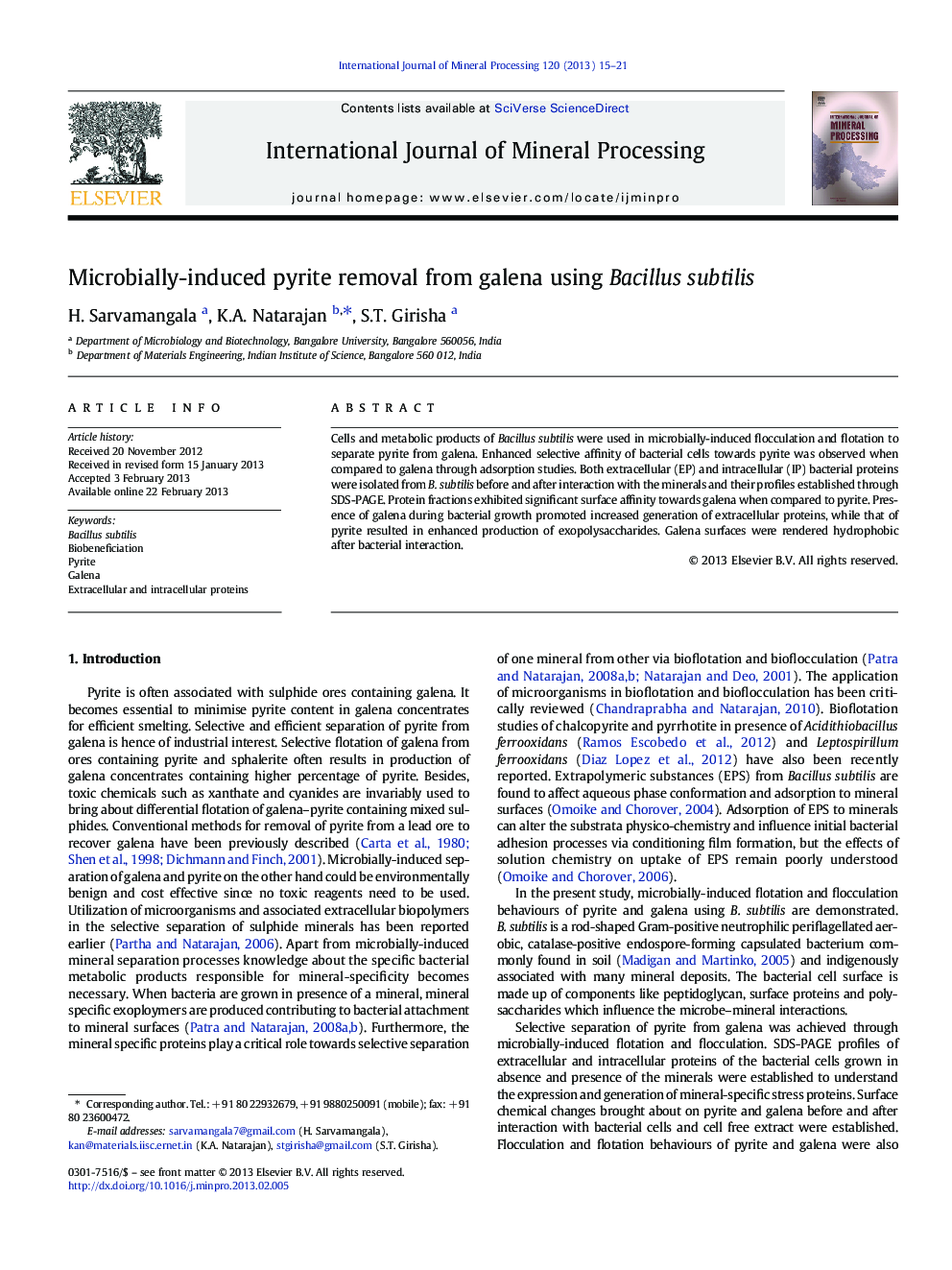| Article ID | Journal | Published Year | Pages | File Type |
|---|---|---|---|---|
| 214069 | International Journal of Mineral Processing | 2013 | 7 Pages |
Cells and metabolic products of Bacillus subtilis were used in microbially-induced flocculation and flotation to separate pyrite from galena. Enhanced selective affinity of bacterial cells towards pyrite was observed when compared to galena through adsorption studies. Both extracellular (EP) and intracellular (IP) bacterial proteins were isolated from B. subtilis before and after interaction with the minerals and their profiles established through SDS-PAGE. Protein fractions exhibited significant surface affinity towards galena when compared to pyrite. Presence of galena during bacterial growth promoted increased generation of extracellular proteins, while that of pyrite resulted in enhanced production of exopolysaccharides. Galena surfaces were rendered hydrophobic after bacterial interaction.
Graphical abstractScanning electron micrographs of B. subtilis attached onto (a) pyrite and (b) galena. Bacillus subtilis exhibited higher affinity to pyrite compared to galena.Figure optionsDownload full-size imageDownload as PowerPoint slideHighlights► Bacteria-mediated separation of pyrite from galena discussed. ► Bacillus subtilis exhibited higher affinity to pyrite. ► Microbially-induced flotation and flocculation for removal of pyrite from galena. ► Mineral specific and stress induced proteins were generated in presence of galena.
